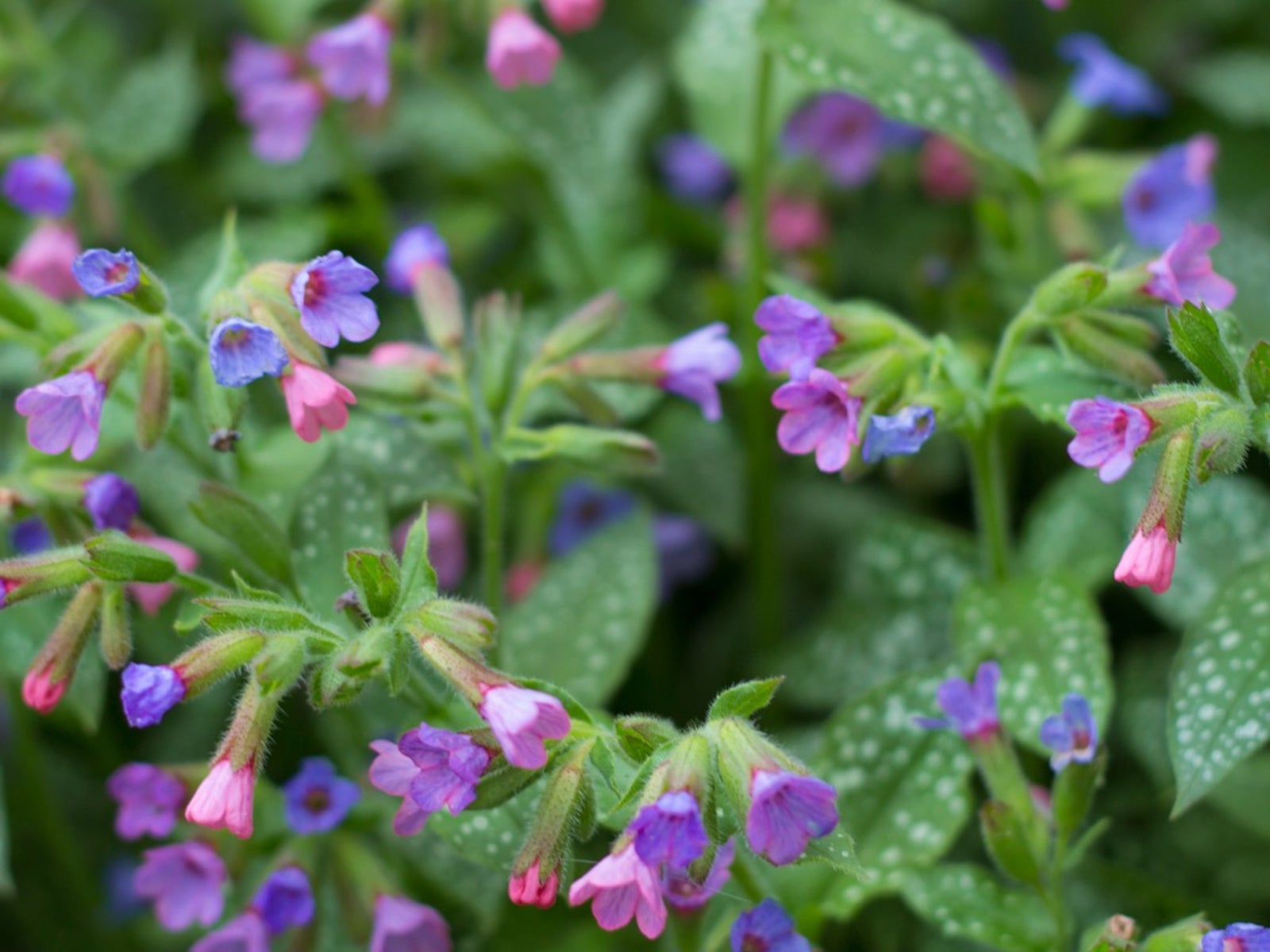Growing Lungwort: Information About The Lungwort Flower


The name lungwort often gives a gardener pause. Can a plant with such an ugly name truly be a lovely plant? But that is exactly what lungwort plants are. This shade plant is not only attractive, but surprisingly resilient.
About the Lungwort Flower
Lungwort (Pulmonaria spp.) gets its name from the fact that herbalists from long ago thought the leaves of the plant looked like a lung and therefore would treat lung disorders. The less-than-attractive name has stuck, but they also are referred to as Bethlehem sage, Jerusalem cowslip, spotted dog, and soldiers and sailors.
Lungwort plants are most often grown for their interesting leaves, which are green with random white spots, looking as though someone liberally splashed bleach on them.
The leaves also have a rough, hairy fuzz covering them. The lungwort flower appears in early spring and can be blue, pink, or white, and is frequently two or more colors on a single plant.
Often the flowers on a lungwort will start out one color before eventually fading into another color as the flower ages.
How to Grow Lungwort
When planting lungworts in your garden, keep in mind that these plants do best in shady, moist (but not swampy) locations. If planted in full sun, the plant will wilt and appear sickly. While the plant does best in moist locations, it can survive in drier locations if enough shade is provided.
Because of this, consider growing lungwort under trees where other plants may have a hard time competing with the roots of the tree for water. In fact, lungwort is one of the few plants that is immune to the effects of black walnut trees and makes a lovely underplanting for these trees.
Gardening tips, videos, info and more delivered right to your inbox!
Sign up for the Gardening Know How newsletter today and receive a free copy of our e-book "How to Grow Delicious Tomatoes".
Lungwort plants grow in clumps and reach a height of about 12 inches (30.5 cm.). In proper conditions they can spread rapidly and can be divided in early spring or fall. When dividing lungworts, don't panic if the plants wilt soon after division. Simply replant them and provide water and they will perk up quickly.
Once established, lungworts need little extra care. You only need to water them in times of drought and they only need light fertilizer once a year. Once you get past the ugly name, planting lungwort in your garden becomes a wonderful idea. Growing lungwort in your shade garden is both easy and beautiful.

Heather Rhoades founded Gardening Know How in 2007. She holds degrees from Cleveland State University and Northern Kentucky University. She is an avid gardener with a passion for community, and is a recipient of the Master Gardeners of Ohio Lifetime Achievement Award.
-
 Zinnias On Repeat: 10 Glorious Cut-And-Come-Again Varieties For Endless Summer Bouquets
Zinnias On Repeat: 10 Glorious Cut-And-Come-Again Varieties For Endless Summer BouquetsThese zinnia varieties keep giving all summer, making them the perfect choice for dedicated cutting gardens – or just the occasional homegrown bouquet.
By Ellen Wells
-
 Create A Romantic Garden Straight Out Of Bridgerton: Regency Era Romance In Your Garden
Create A Romantic Garden Straight Out Of Bridgerton: Regency Era Romance In Your GardenTry some romantic garden ideas straight out of Bridgerton. Flowers and gardens in the Regency era were lush and charming and you can get the same look!
By Bonnie L. Grant
-
 Growing Pulmonaria Indoors: Caring For Indoor Lungwort Plants
Growing Pulmonaria Indoors: Caring For Indoor Lungwort PlantsAn understanding of how Pulmonaria grows outdoors is key to understanding lungwort plant care indoors. Read on for more.
By Raffaele Di Lallo
-
 Winterizing Pulmonaria Plants: Learn About Pulmonaria Winter Care
Winterizing Pulmonaria Plants: Learn About Pulmonaria Winter CareCool season plants, such as Pulmonaria lungwort, are great options for gardeners wishing to kickstart their spring flower beds with a burst of color. Click here to learn more about lungwort in winter its care so you can enjoy its full potential come spring.
By Tonya Barnett